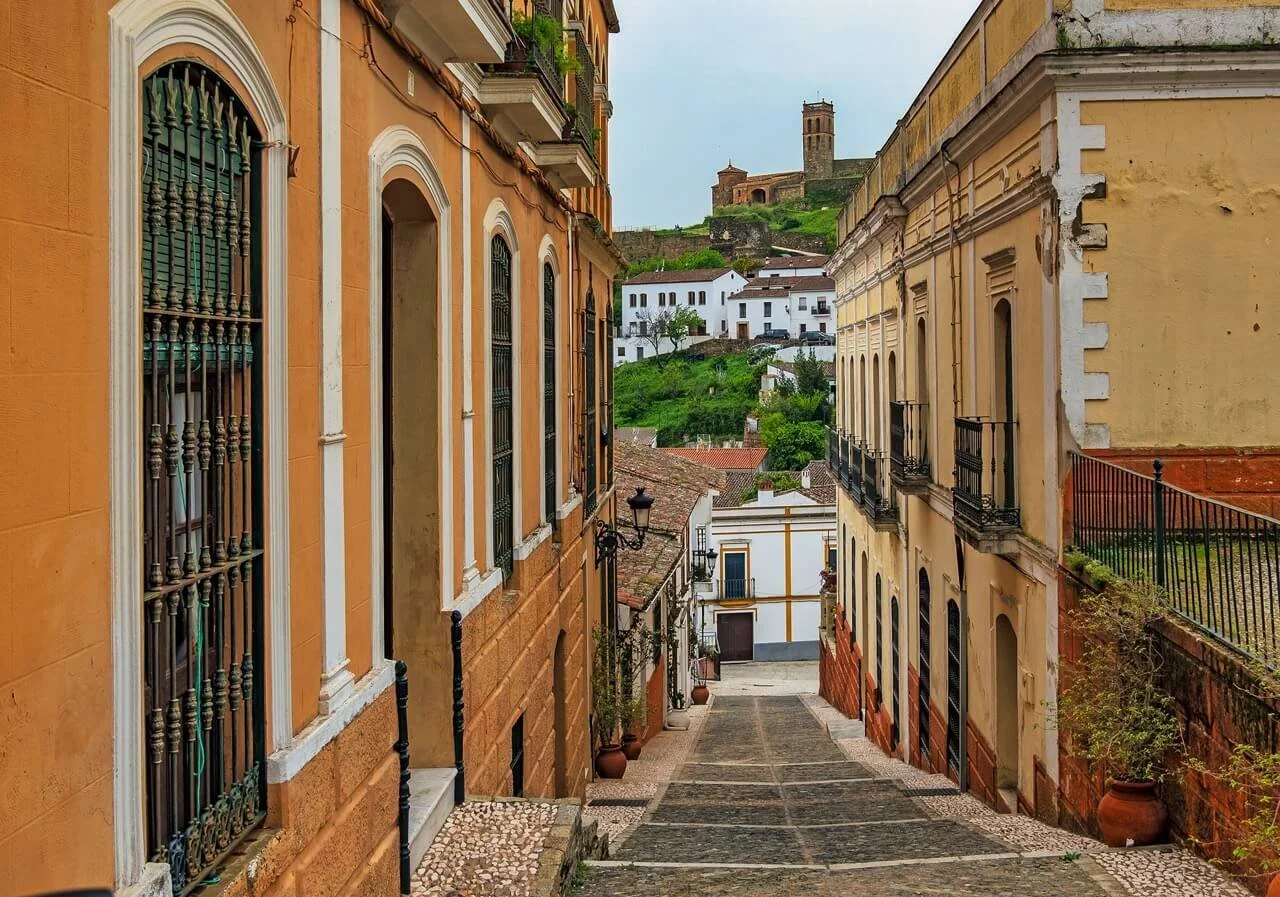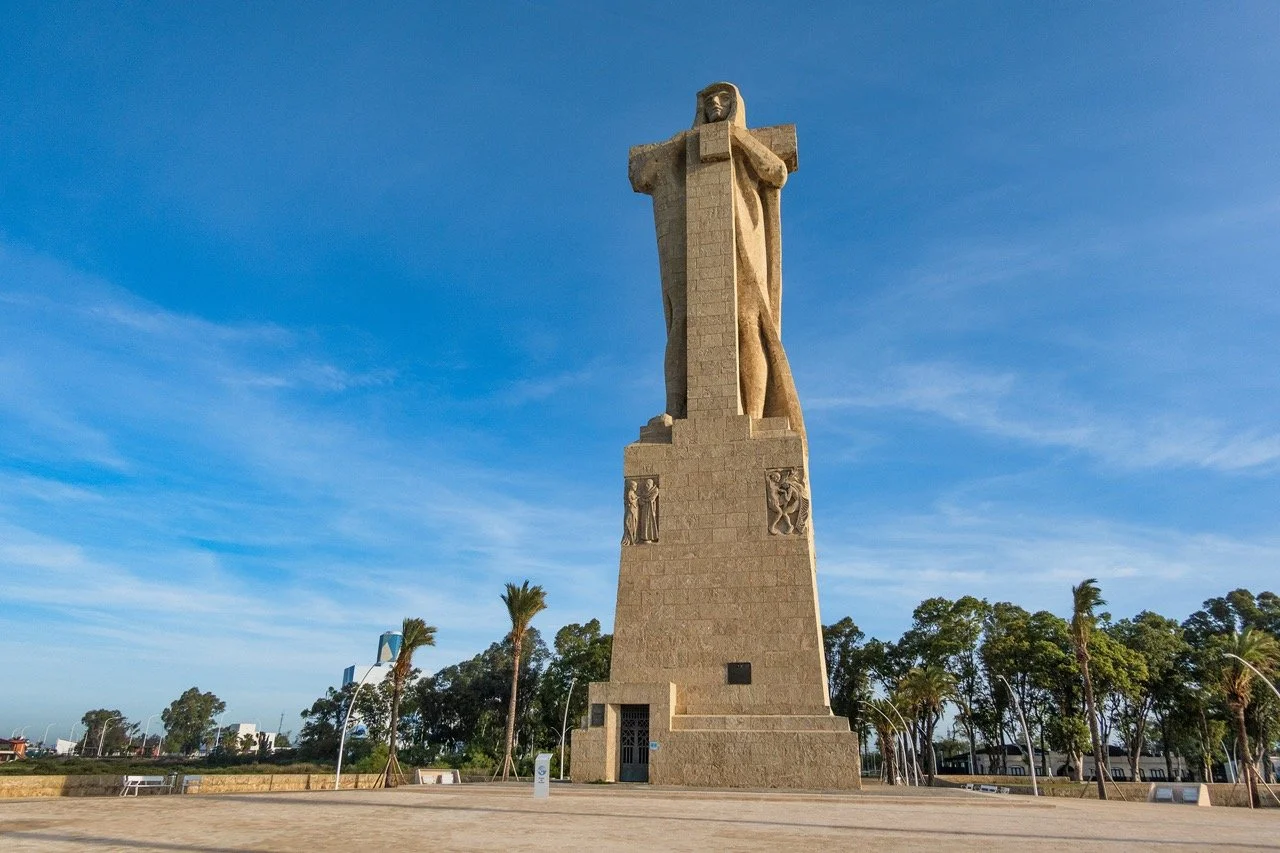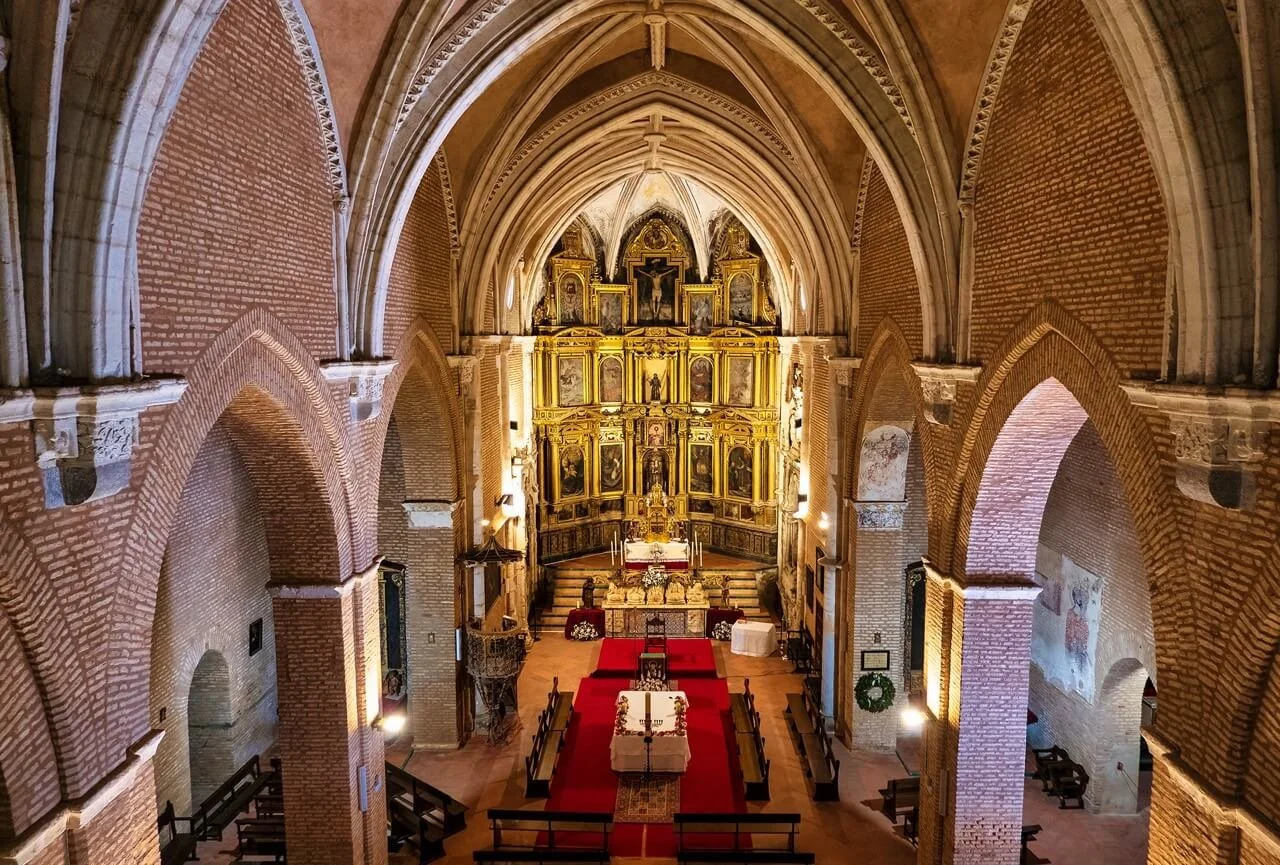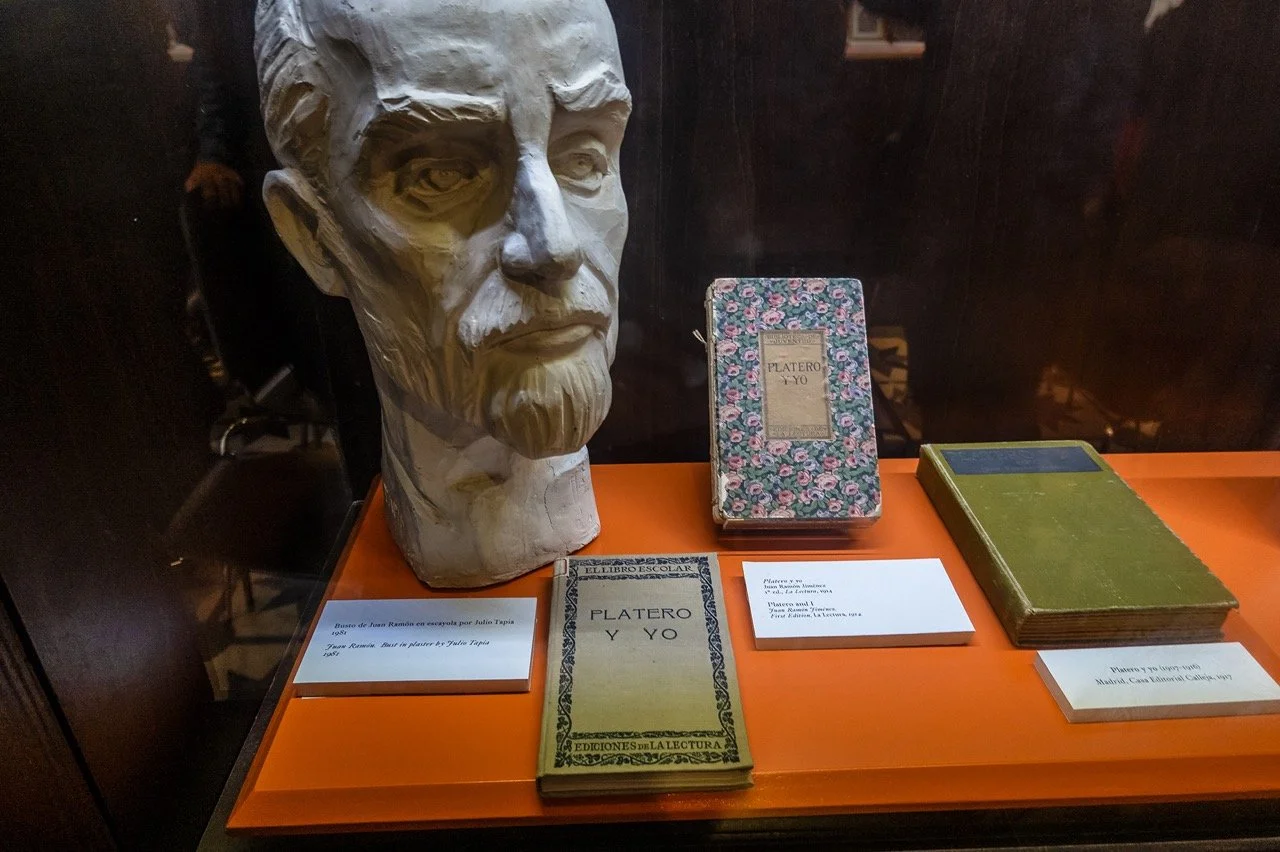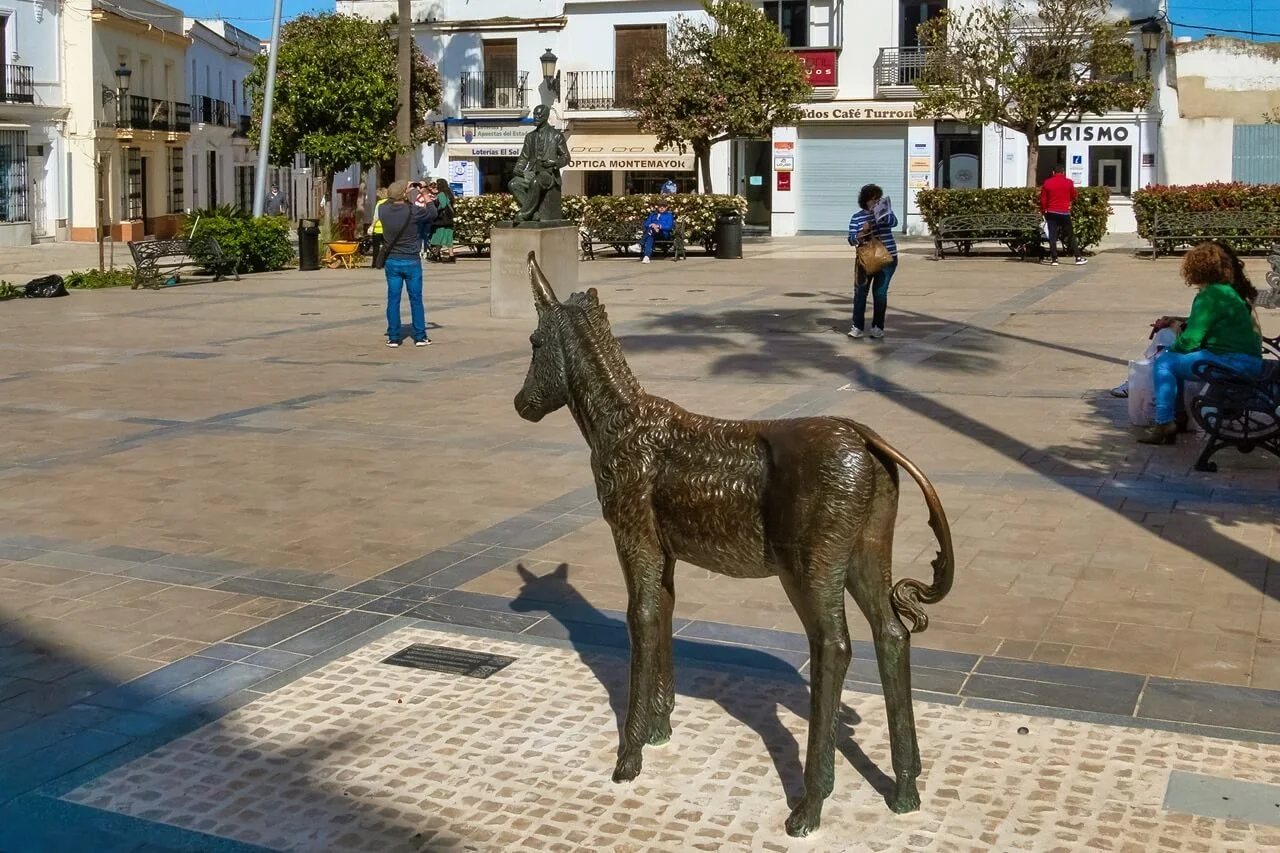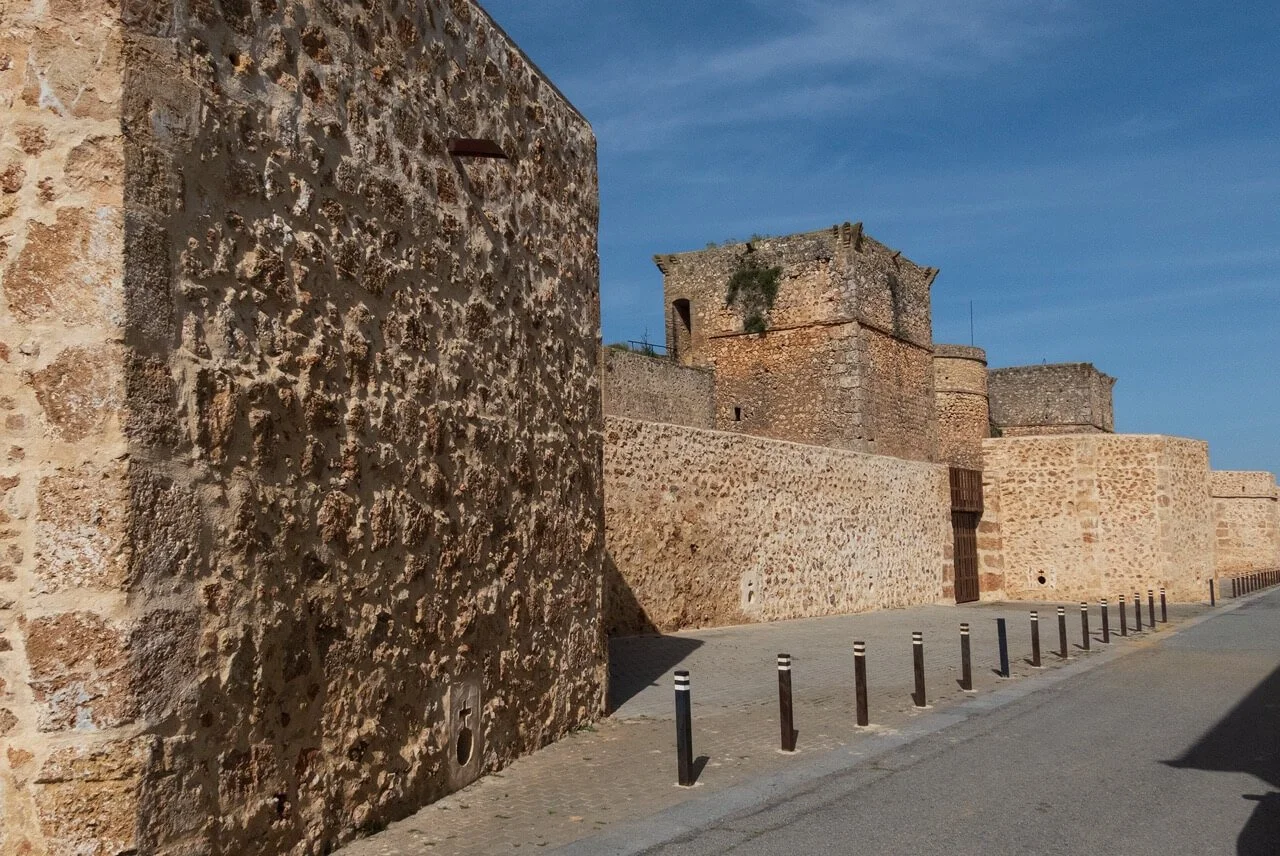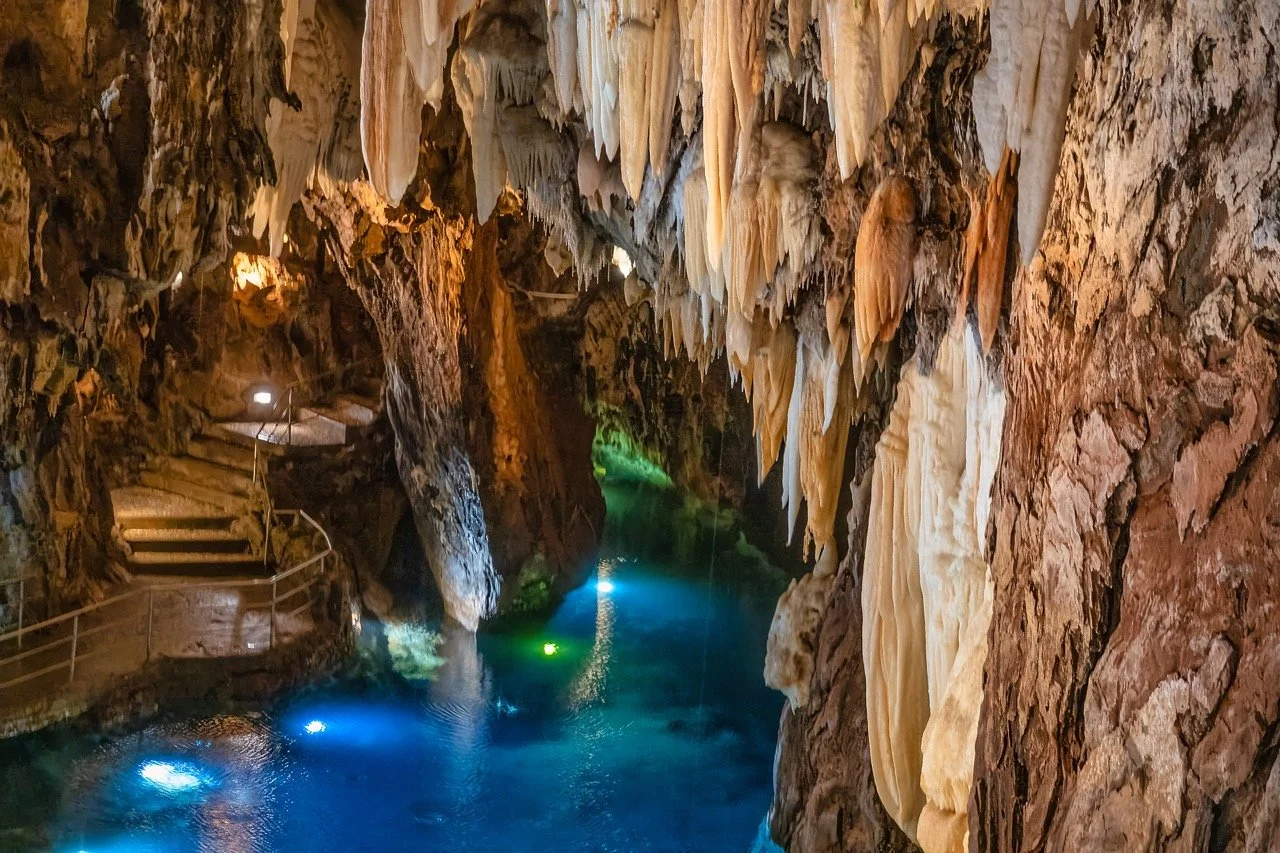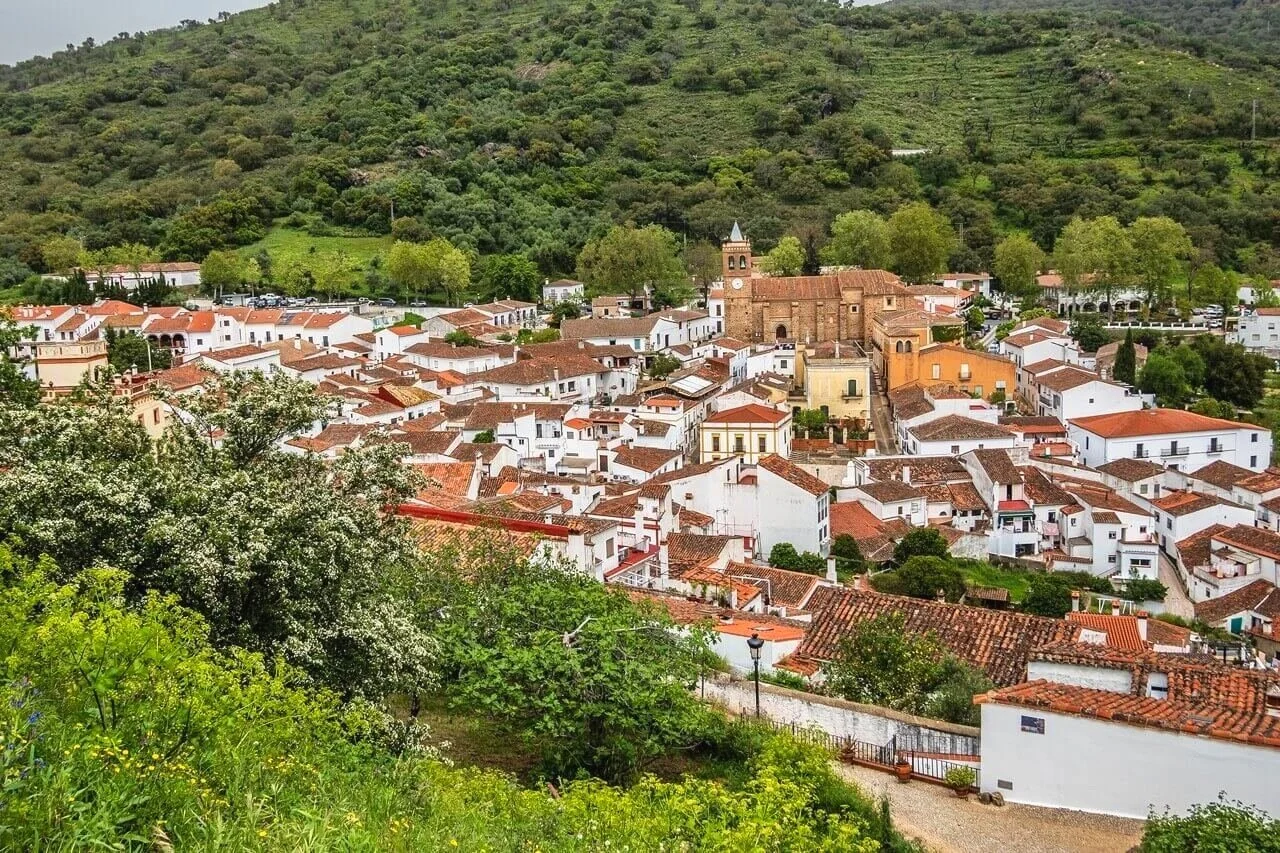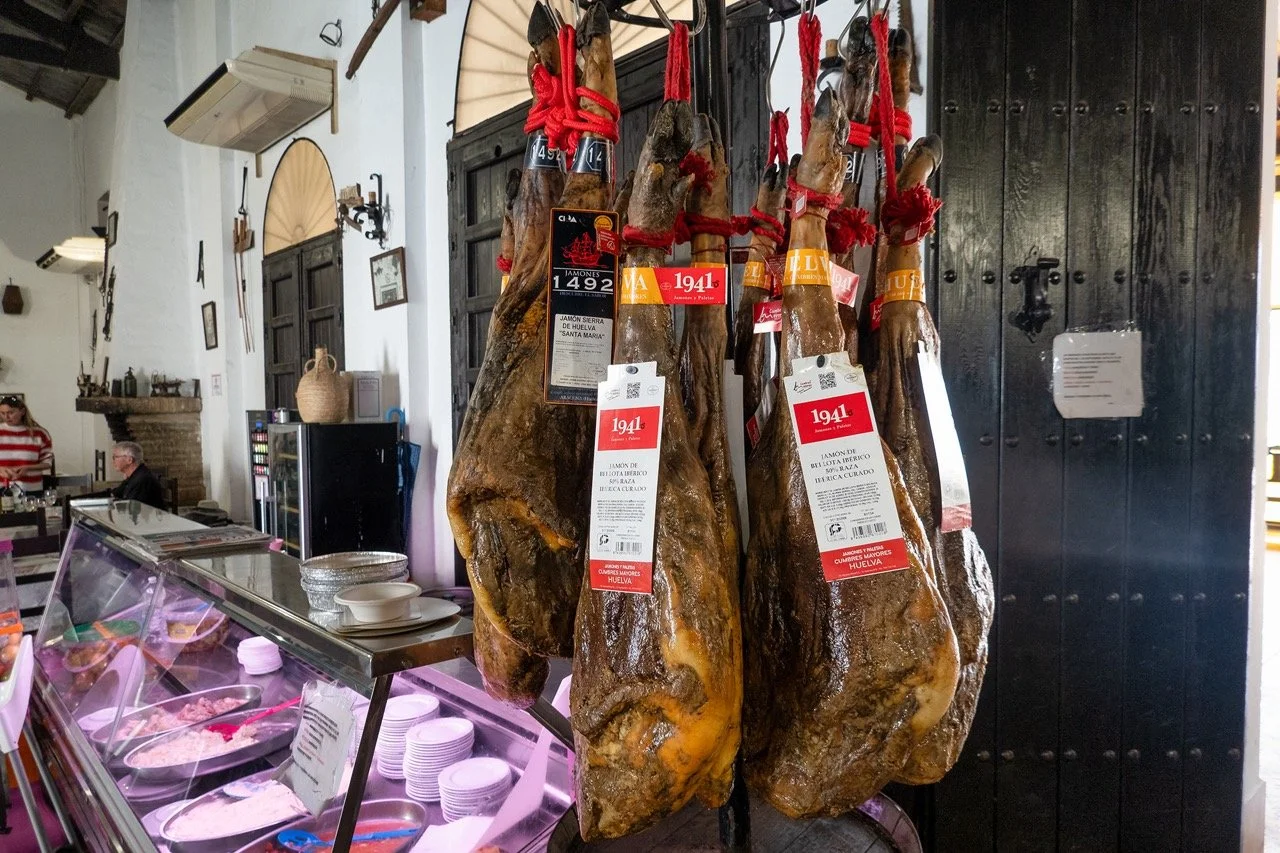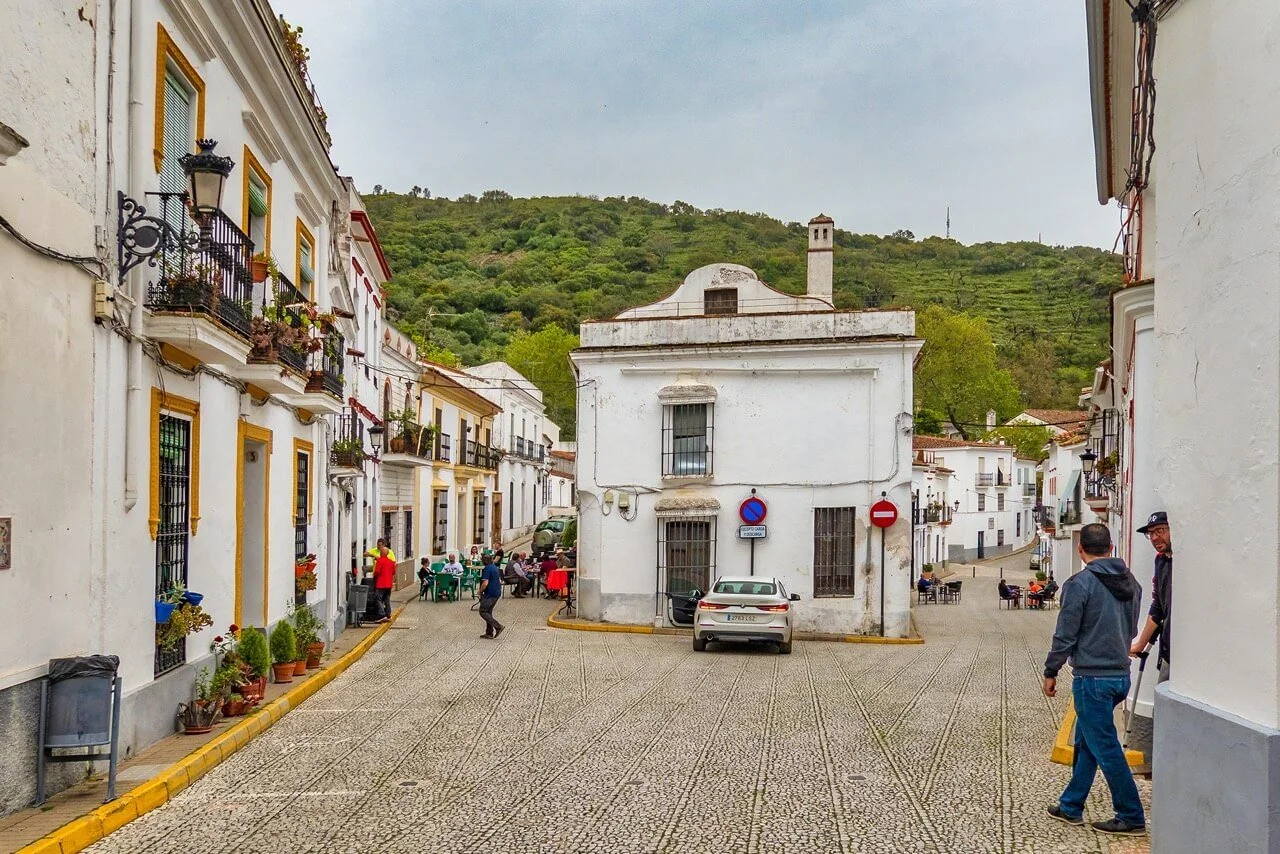Things to Do in Huelva Province: Discover the Top Huelva Tourist Attractions in Southwestern Spain
If you’re planning a trip to the South of Spain or Portugal, then ensuring you spend some time in Huelva province is a must. Robin and Arlene Karpan are back, and have put together this informative article to help you travel to this delightful corner of Spain.
The village of Alájar. Photo Credit: Robin & Arlene Karpan
Want to explore some of the best that Spain has to offer in history, culture, scenery, nature, and fabulous food while avoiding the tourist crowds? The province of Huelva fits the bill perfectly.
Tucked into the southwest corner of Spain between Seville and Portugal, it boasts fine beaches along the Andalucian coast, forested mountains with stunning vistas around every corner, and one of Europe’s most important wetlands in Doñana National Park. History abounds everywhere, from Roman and Phoenician times to the “Cradle of America,” where Spain’s influence dominated the New World.
The best news is that Huelva tends to be a bit off the beaten path for many visitors, so we are spared the mass tourism common in much of southern Spain.
Please note that this article contains affiliate links. Simply put, this means we may receive a small commission for some of the honest recommendations in this article, at no additional cost to you.
How to Get to Huelva Province, and Where to Stay
Views from Almonaster. Photo Credit: Robin & Arlene Karpan.
Seville is the most convenient departure point to travel to Huelva Province. You can fly to Seville from many further away destinations, and then reach the province from there.
Huelva city and the area around Palos and Moguer are about an hour straight west from Seville, while Aracena is about an hour northwest of Seville.
From Seville, you can take a bus or a train to reach Huelva city. Once you’ve arrived to the province, public transport connects the main towns, but having a car makes it easier to visit the more remote hill towns. If you’re planning on extending your stay in the region, we took trips to Jerez de la Frontera and Ronda from here.
Accommodation abounds throughout the region. Our main base when exploring Huelva was the beautifully situated Barceló Aracena. This hotel is located on a hill just outside town with a magnificent view over the historic town and hilltop castle.
The Highlights of Huelva Province
Whether you’ve come for history, culture, scenic landscapes or cuisine, there is so much to see and do in the province of Huelva. Here are the highlights we’d recommend taking advantage of when you visit the region for yourself.
Cruise with Columbus in Palos de la Frontera
Columbus statue. Photo Credit: Robin & Arlene Karpan.
Christopher Columbus looms large among Huelva’s historic figures. Not far from Huelva’s capital city (also called Huelva) sits the town of Palos de la Frontera near the mouth of the Rio Tinto. In the 1400s, this was the main seaport along Spain’s southern coast. It was from here that Columbus set out on his first voyages of discovery, and it later became an important link between Spain and the New World.
The Monastery of La Rábida in Palos is part of a UNESCO World Heritage Site due to its intimate connection to the Columbus story. A tour of this fascinating ancient site, which still operates as a monastery, tells the behind-the-scenes story of what happened.
The familiar narrative is that Columbus convinced the Spanish Monarchs, Isabella and Ferdinand, to back his voyage. But a foreigner from Italy can’t just walk up to the Spanish Queen and say, “How about some money and ships so I can sail where no one has gone before?” This is where the friars of La Rábida came in.
A destitute Columbus was living in the monastery, where he gradually convinced the friars of the merits of his project. One was Padre Hernando Talavera, the confessor to Queen Isabella. He and others in the monastery had a lot of influence on the Queen and intervened on Columbus’ behalf. If not for the friars of La Rábida, Columbus may never have sailed.
Throughout the monastery, intricate murals bring to life the highlights of that era. One small non-descript room is called the “Cradle of America”. It was here that the decisive meeting took place between Columbus and the Queen’s confessor, who agreed to take the proposal to the monarchs.
Several other places in the area relate to the Columbus saga, including a massive 37-metre stylized statue looking out to sea. Another statue commemorates Washington Irving, the American author who spent a lot of time here in the early 1800s researching the Columbus story and popularizing it in the English-speaking world.
Encounter History and a Literary Giant in Moguer
Inside the Monastery of Santa Clara in Moguer. Photo Credit: Robin & Arlene Karpan.
Just up the Rio Tinto from Palos is Moguer, where we walked the pleasant streets surrounded by gleaming white buildings and discovered its rich past. It also has a close association with Columbus—his ship La Niña was built in the local shipyards in the late 1480s.
The impressive Monastery of Santa Clara, dating to 1337, is considered a prime example of Mudejar architecture, from a time when Christian, Muslim, and Jewish cultures lived together and drew on each other’s styles. Before his voyage, Columbus pledged allegiance to the Spanish Crown in this monastery.
Moguer’s most famous personality is Juan Ramón Jiménez, the celebrated writer and poet who rose to rock star status in Spain, and especially in his hometown. He won the Nobel Prize for Literature in 1956, and soon after his death, his house was turned into a museum.
Jiménez was a prolific writer and the museum maintains an extensive collection of his books, manuscripts, and related material. Paper wasn’t always readily available in the early 1900s, so he wrote on every small scrap of paper he could find.
The book that brought Jiménez international fame was Platero Y Yo (Platero and I), the tender story of a man and his beloved donkey. Among the many public works of art around town are sculptures of the little donkey Platero.
Wander through the ancient walled city of Niebla
Castillo de Niebla. Photo Credit: Robin & Arlene Karpan.
We entered the attractive old town of Niebla through massive fortified gates that form part of a two-kilometre wall surrounding the ancient site overlooking the Rio Tinto. It dates to the time of the Muslim occupation, and stands as a testament to Niebla’s strategic importance to agriculture, trade, and silver production.
Inside the walls, the expansive Castillo de Niebla offers another glimpse of the past, with changes made by successive occupants over the centuries. You can explore the castle and climb to the top of the walls for views of the city.
Nieblans are also proud of another important local ancient treasure, Santa Maria de la Granada Church. Here too, we see influences from throughout the ages, from Roman times to a Byzantine cathedral, Arabic mosque, and Gothic-Mudejar church. The former ornate Muslim minaret was left standing and converted to a bell tower—so much of the Western World’s human history can be found in a single building here.
Visit Aracena and northern Huelva
Gruta de las Maravillas. Photo Credit: Robin & Arlene Karpan.
Aracena is a delightful white town in mountainous northern Huelva, dominated by the ruins of an ancient hilltop castle dating to the 13th century. The town is surrounded by the Sierra de Aracena y Picos de Aroche Natural Park, making it a great base to explore the region's natural attractions, including walking and biking routes.
Aracena’s most famous attraction lies right underneath the town. The Gruta de las Maravillas (Cave of Wonders) is among the most spectacular cave systems in Spain. Guided tours take visitors on a 1.5-kilometre underground route through several chambers. Along the way, we pass an astounding number of stalagmites and stalactites, calcite curtains, and beside greenish-blue pools. Everywhere we turn, we see the colours change from pure white calcite to a greenish tinge from copper, yellow and orange from iron, and grey and black from lead.
Marvel at Almonaster la Real: Spain’s Prettiest Village?
It’s easy to understand why Almonaster, a tiny town west of Aracena, is regarded among the prettiest villages in Spain. That’s official, by the way, duly recognized by the Los Pueblos Más Bonitos de España (Prettiest Villages in Spain Association).
Hidden away in the hills, it has a timeless feel to it, nestled in a valley and surrounded by forests of cork oak and chestnut trees of the Sierra de Aracena y los Picos de Aroche Natural Park.
Almonaster. Photo Credit: Robin & Arlene Karpan.
We follow the narrow cobblestone streets to the ancient mosque-castle on the hilltop, noteworthy for being developed through the four major eras of Andalucian history: Visigoth, Roman, Muslim, and Christian. Some columns date from Roman times, while much of the 9th-century mosque was built on the remains of a 6th-century Visigoth basilica. The mosque’s mihrab, the prayer niche facing Mecca, is the oldest in Spain.
Alájar and the Peña de Arias Montano
The village of Alájar could give Almonaster a run for its money in the pretty category. Similarly surrounded by forested hills, this small mountain community has so many original houses that it has been declared an official Historic-Artistic Site.
The best view of Alájar is from high above on the cliff-top site of Peña de Arias Montano, just off the main highway. A centerpiece is the Ermita de Nuestra Señora Reina de los Ángeles, founded in the 16th century. The story goes that the Virgin appeared here to a local shepherd, and it has been an important place of pilgrimage ever since. Even the Dalai Lama visited and mentioned that he could feel the energy of the place.
Where to Eat in Huelva Province
Huelva is most famous for its Iberian ham. Photo Credit: Robin & Arlene Karpan.
There is little chance of going hungry in Huelva. With its varied landscapes of coastlines, rivers, mountains, and fertile plains, Huelva excels at food production. Not surprisingly, seafood dominates the coast. Travelling inland we passed vast fields growing fruits such as raspberries, blueberries, and the biggest (not to mention tastiest) strawberries we’ve enjoyed anywhere.
One of our favourite eateries was Meson El Lobito in Mogeur. The huge dining room features a massive open fireplace, where they grill meat over a wood fire. Seafood is a big part of the menu with specialties such as squid, and huge giant prawns and langostinos. Owner Manuel oversees the operation, explaining the many dishes and recommending quality local wines to complement the food.
Another outstanding restaurant is Juan Hormigo in Aracena. We started with rich mushroom soup made from boletes gathered from nearby forests, then cod in creamy sauce, pork cheeks (a popular Andalucian delicacy), and chef Juan’s signature dessert—leche frita (fried milk), which tastes a lot better than it sounds in English. This traditional dessert consists of milk, flour and sugar mixed into a paste then coated in eggs and fried. Juan is very hands-on with every aspect of the meal, including visiting with guests and demonstrating how to carve Iberian ham.
Huelva’s most celebrated food is undoubtedly Iberian ham. It has a well-deserved reputation as the world’s tastiest ham, with the best of the best coming from Huelva.
Planning Your Next Trip to Huelva
Wandering around the white town of Almonaster. Photo Credit: Robin & Arlene Karpan.
We hope you’ve enjoyed learning all about the highlights of visiting Huelva province during your next trip there. We’ve also put together this map that you can use to find all of the locations mentioned throughout this article.
Stay tuned for our upcoming article about Iberian ham. It will take a behind-the-scenes look at the fascinating and surprisingly complex world of producing the world’s most celebrated and expensive hams.
Huelva was a pleasant surprise. It tends to be a lesser-known part of Spain, but it boasts some of the country’s most compelling attractions. A big bonus was that most places we went to were not overrun by tourists, and in a few cases, we were part of only a handful of other visitors.


